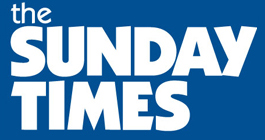Rough ride of tennis popularity
View(s):Tennis, with a history of almost 200 years, is still to find the formula comfortable to sustain. In the colonial era to today, the administration to participation in various levels has changed and is changing to remain effective.
In ours, the heat becoming extreme has shrunk the playing hours for recreational players and for competition training. A health factor disturbance. Long spells of rain is add-on negatively. One could say the summer sport 1840 is facing adjustments that could touch on the future popularity.
Alternatives
 First of the indoor courts did not appear until 1930 in Scandinavia and they were wooden, a super-fast surface made tennis to be mere serve and volley game. Subsequent wave of indoor courts made tennis popular urban dwellers sporting activity with social life. Energy crisis has brought this wave to a standstill. Other sports too are in this bracket. The support that was forthcoming from local governments has changed, in fact reversed they demand more as taxes in Colombo.
First of the indoor courts did not appear until 1930 in Scandinavia and they were wooden, a super-fast surface made tennis to be mere serve and volley game. Subsequent wave of indoor courts made tennis popular urban dwellers sporting activity with social life. Energy crisis has brought this wave to a standstill. Other sports too are in this bracket. The support that was forthcoming from local governments has changed, in fact reversed they demand more as taxes in Colombo.
The 1960s, effort to make tennis round the year sport has ceased. Participatory trend of tennis in most countries has shown a decline. With successive generation, tennis participatory popularity changes this time noticeably negative. From high-end popularity now in difficult to sustaining level.
Showcase
The formation of the professional bodies WTA and ATP turned around tennis popularity from fast decline. English football league approach. Most football fans have never kicked a ball. Now most tennis fans have never hit a ball.
Apart from the Grand Slam events, WTA and ATP have appealing spectator events to keep global interest. Electronic media is their platform to popularise the game. The present wave of success is their effort.
Sustainable tennis
Often in sports, player development and fielding them in high-end league considered the benchmark of popularity of a sport. In our island, tennis attraction fuelled by overseas scholarships for studies. There are many ITF events in Sri Lanka to register benchmark needed for scholarship. Unfortunately, in the ITF events the main draw one does not have many local names. ITF referees and their system insist on their qualifying status for entry. In Under-18 category, wild card entry is the only way in for local players.
Development strategy
Tennis player development is long and a winding road. One of the success stories comes to my mind. In the 1960s upcountry tennis attached to plantation sector sports clubs. A missionary school principle channelled a player from his school into tennis from badminton. Talk of long term planning this was the giddy height of it, lamented eternal sporting friend and sports historian late Peter Amerasinghe. This player within the next five years played Davis Cup –Wattegedera. This type of engineering has ceased.
In Colombo, club managements were with executives of colonial trading companies. Ceylon had attractive Portuguese, Dutch and English companies. Considerable amount of expenses were borne by them to promote tennis clubs. These companies have ceased to exist.
Junior tennis is now international
ITF, now a low-key player in open professional tennis, has made junior tennis a big global activity. They have well over 200 events in our region and an impactful number of them in Sri Lanka. Of hand, our association will conduct 130 plus tennis events in Sri Lanka this year. In this, a noticeable number will be of service to ITF. A noticeable economy through sport. We are not the only a link but one of many nations in Asia.
ITF largely displaced by professional bodies ATP and WTA in the global tennis setup. Professionals have kept up the tennis momentum well for the professional players competing with other popular sports. In senior events ITF still hold the rights of the four Grand Slam events and the Davis Cup. North and South Americas have their own junior agenda, said to be very effective to lead players into ATP and WTA ranking. Asia is not their league.
Sports intelligence
Defining this is like catching a shooting star. Sports intelligence can be playing state of mind, accessible to competitive energy, mind over matter trigger, ability shed all distraction and be on the trail of winning. The higher the player goes the need is paramount. In a way, a substitute to the aging body, tactical fatigue and others. In professional sport, ageing means 32 years of age, then to win it has to be with mental energy. In professionalism 30 years is veteran. Thirty-five is old age. All this leaves about 11 years of prime if player peaks at 19.
Locally activity-tennis, meaning less challenging. It is finding space for facilities, investment, sponsorship and management. There are many now with lower skill level requirement. Paddle tennis, pickle ball and good few others. There is a hint one of them will find its way into the next Olympic game.
–George Paldano, European and Asian competition player; Coach German Tennis Federation; National coach Brunei and Sri Lanka;
Davis Cup, Federation Cup coach, coached ATP, WTA and ITF ranked players in Europe and Asia; WhatsApp +94775448880–


